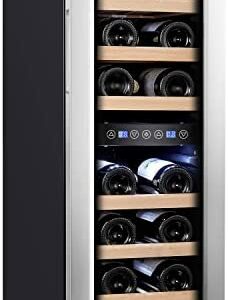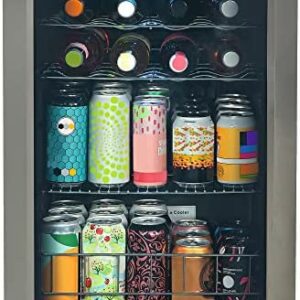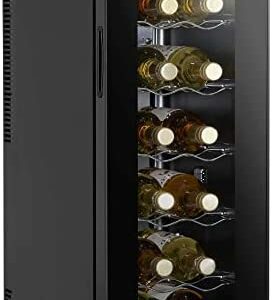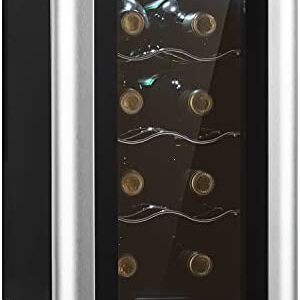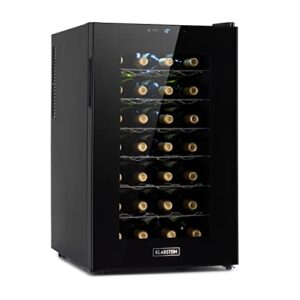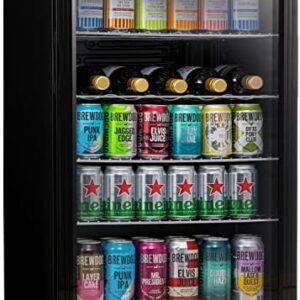Red wine is made by fermenting red grapes. The grapes are crushed, and the juice is left in contact with the grape skins, which contain the colour and flavour compounds, during fermentation.
Red wine is one of the most popular alcoholic beverages consumed worldwide. It is made by fermenting the juice of red grapes, which contains a variety of natural sugars, acids, and other compounds. The fermentation process takes place in large stainless steel or oak barrels, where yeast consumes the sugar and converts it into alcohol.
To make red wine, the grapes are first harvested and then crushed to extract the juice. Unlike white wine, red wine is made with the grape skins still attached, which gives it its characteristic colour and flavour. The juice is left in contact with the skins for several days to several weeks during fermentation, which allows the colour and flavour compounds to be extracted. After fermentation, the wine is aged in barrels or bottles to develop its flavour and aroma.
The Basics Of Red Wine
Understanding the basics of red wine production is essential for any wine enthusiast. From grape selection to crushing and destemming, each step in the process plays a crucial role in the final product. Let's delve into the fundamental aspects of red wine production to gain a deeper appreciation for this beloved beverage.
Grapes Selection
The quality of red wine starts with the selection of the grapes. Vineyard managers carefully choose the ideal grape varieties, considering factors such as ripeness, acidity, and tannin levels. Varieties like Cabernet Sauvignon, Merlot, and Pinot Noir are commonly used for red wine production due to their rich flavour profiles. The grapes are harvested by hand or machine, ensuring that only the finest fruit is used for the winemaking process.
Crushing And Destemming
After the grapes are harvested, they undergo the process of crushing and destemming. Crushing involves breaking the grape skins to release the juice, while destemming removes the stems from the grape bunches. This step is crucial in red wine production, as it determines the level of tannins and flavours extracted from the grapes. Modern wineries utilize advanced machinery for efficient crushing and destemming, ensuring a consistent and high-quality extraction of grape juice.
Fermentation Process

During the fermentation process, the sugars in the grape juice are converted into alcohol by yeast, creating red wine.
Addition Of Yeast
Yeast is added to the grape juice to kickstart the fermentation process.
- Yeast consumes the sugars in the juice and produces alcohol and carbon dioxide.
- This process typically takes about one to two weeks to complete.
Punching Down The Cap
Punching down the cap involves pushing the grape skins and solids back into the liquid to extract more colour and flavour.
- This process helps enhance the tannins and mouthfeel of the wine.
- It also aids in maintaining consistent fermentation temperatures.
Extraction Of Colour And Flavour
When it comes to the production of red wine, the extraction of colour and flavour from the grape skins is a crucial step in the winemaking process. This stage, known as maceration, plays a significant role in determining the characteristics and quality of the final product.
Maceration Period
The maceration period involves allowing the crushed grape skins, seeds, and juice to remain in contact during fermentation. This process enables the extraction of colour compounds, tannins, and flavour components from the grape skins. Typically, the length of the maceration period can vary depending on the desired style of the wine, with some wines undergoing a shorter maceration for a lighter colour and softer tannins, while others may have an extended maceration for a deeper colour and more complex flavours.
Pressing The Grapes
Following the maceration period, the next step is pressing the grapes to separate the solid grape skins and seeds from the liquid portion, known as the must. The pressing process is crucial for extracting the remaining juice from the grape solids while minimizing the extraction of bitter tannins. Winemakers may employ different methods of pressing, such as using pneumatic or basket presses, to carefully control the pressure and duration of the pressing process, thereby influencing the overall quality and style of the wine.
Ageing Red Wine
When it comes to the process of making red wine, one of the most crucial stages is the ageing process. Ageing red wine is a delicate and intricate process that significantly impacts the flavour, aroma, and overall quality of the final product. There are two primary methods of ageing red wine — oak barrel ageing and bottle ageing.
Oak Barrel Ageing
Oak barrel ageing is a traditional method that has been used for centuries to impart complex flavours and aromas to red wine. The porous nature of oak allows a controlled amount of oxygen to interact with the wine, which softens tannins and adds depth to the flavour profile. The oak also contributes notes of vanilla, spice, and sometimes a subtle smokiness to the wine. This method is often preferred for bold, full-bodied red wines such as Cabernet Sauvignon and Merlot.
Bottle Ageing
Bottle ageing is a process where the wine is aged in the bottle itself, typically after it has already been aged in oak barrels. This method allows the wine to evolve and develop more complex characteristics over time, as it slowly matures in a controlled environment. During bottle ageing, the wine undergoes subtle chemical changes that enhance its overall complexity and bouquet. It is a preferred method for delicate and nuanced red wines such as Pinot Noir and Nebbiolo.
Blending And Finishing Touches
Blending and Finishing Touches play a crucial role in the production of red wine.
Blending Different Varietals
Winemakers carefully combine different grape varietals to achieve the desired flavour profile.
Filtering And Bottling
After blending, the wine undergoes filtration to remove impurities before bottling.
Quality Control
Quality control is a crucial aspect of the red wine-making process. It involves monitoring and testing the grapes, fermentation, and ageing to ensure the wine meets desired standards. By maintaining strict quality control measures, winemakers can produce high-quality red wines that meet consumer expectations.
Quality control is a crucial part of the red wine production process. It ensures that the wine meets the highest standards of taste, aroma, and consistency. Two key aspects of quality control in the winemaking process are Tasting and Adjustments and Lab Analysis.
Tasting And Adjustments
During the winemaking process, experienced tasters regularly sample the wine to evaluate its flavour profile and aroma. This is done to ensure that the wine is developing as intended and to identify any potential issues that may need to be addressed. If any adjustments are deemed necessary, such as balancing the acidity or sweetness, the winemaking team will make precise modifications to the wine to achieve the desired characteristics.
Lab Analysis
Lab analysis plays a vital role in quality control, as it provides objective data on various aspects of the wine, including alcohol content, acidity levels, and volatile acidity. This scientific approach allows winemakers to make informed decisions about the adjustments needed to achieve the desired quality and consistency. By utilizing advanced technology and equipment, winemakers can closely monitor the progress of the wine and make precise adjustments as needed to maintain the highest standards. By implementing rigorous quality control measures, winemakers can ensure that each bottle of red wine meets the expectations of discerning consumers, delivering a consistently exceptional product.
Packaging And Labelling
Packaging and labelling are crucial aspects of the red wine production process. Properly designed bottles, compliance with regulatory requirements, and attractive labelling play a significant role in the marketing and presentation of red wine to consumers.
Bottle Design
The bottle design of red wine is carefully considered, reflecting the brand's image and attract consumers. It should be stylish, durable, and able to preserve the wine's quality.
Regulatory Requirements
Red wine producers must adhere to strict regulatory requirements when it comes to packaging and labelling. This includes alcohol content, origin, and health warnings. Compliance ensures consumer safety and trust.
From Vineyard To Glass
Red wine is a delightful creation that goes through a fascinating journey from vineyard to your glass.
Sustainable Practices
Winemakers are increasingly adopting sustainable practices to minimize environmental impact.
- Organic farming methods
- Biodynamic agriculture
- Water conservation techniques
Wine Tasting Experience
Embark on a sensory journey with a wine tasting experience that engages all your senses.
- Swirl the wine in your glass
- Inhale the aromas deeply
- Sip and savour the flavours
To sum up, the process of making red wine involves crushing, fermenting, pressing, and ageing grapes. Understanding this journey from vine to glass enhances the appreciation of each sip. Embrace the complexities of winemaking and savour the rich flavours in every bottle.
Red Wine Fridges you may like:
-
 Kalamera 19-Bottle Dual Zone Wine Fridge
Kalamera 19-Bottle Dual Zone Wine Fridge -
 Russell Hobbs RHGWC4SS-LCK Freestanding Wine Cooler – 62L
Russell Hobbs RHGWC4SS-LCK Freestanding Wine Cooler – 62L -
 CDA 7 Bottle Capacity Single Zone Freestanding Under Counter Wine Cooler
CDA 7 Bottle Capacity Single Zone Freestanding Under Counter Wine Cooler -
 Baridi 12 Bottle Wine Cooler with Digital Touch Screen Controls & LED Light
Baridi 12 Bottle Wine Cooler with Digital Touch Screen Controls & LED Light -
 Klarstein Reserva Slim Uno Wine Refrigerator – 23L/8 Bottles, Black
Klarstein Reserva Slim Uno Wine Refrigerator – 23L/8 Bottles, Black -
 Klarstein Barolo 28 Uno Wine Refrigerator – 70 Litres/28 Bottles
Klarstein Barolo 28 Uno Wine Refrigerator – 70 Litres/28 Bottles -
 Ivation 8 Bottle Wine Cooler
Ivation 8 Bottle Wine Cooler -
 CANDY CWC021MKN Freestanding Wine Cooler – 85L Black
CANDY CWC021MKN Freestanding Wine Cooler – 85L Black -
 Subcold Super115 LED – Under-Counter Fridge with LED Light and Lock
Subcold Super115 LED – Under-Counter Fridge with LED Light and Lock
Frequently Asked Questions
How Is Red Wine Made, Step By Step?
Red wine is made by crushing grapes, fermenting the juice with yeast, ageing the wine in barrels, and bottling the final product. Now that you know how red wine is made, protect your investment with a Wine Fridge.
Can You Make Red Wine From White Grapes?
Yes, red wine can be made from white grapes. This is done by leaving the grape skins in contact with the juice during the fermentation process, which gives the wine its red colour. However, the resulting wine may have a different flavour profile than red wine made from red grapes.
Do Red Grapes Make Red Wine?
Yes, red grapes are used to make red wine. The skin of the red grapes contains pigments that give the wine its colour. During the fermentation process, the skins are left in contact with the juice, resulting in the rich red colour of the wine.
What Is The Main Ingredient In Red Wine?
The main ingredient in red wine is grapes.

